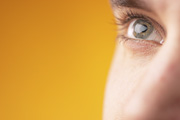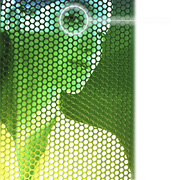Choice Theory Basics
The perceived world and the perceptual system
Dr Glasser explains that the only way we experience the real world is through our perceptual system.  Information about the real world comes to us first through our sensory system: our eyes, ears, nose, mouth and skin. Next, these sensations pass through our perceptual system, beginning with what Glasser calls our total knowledge filter, which represents everything we know or have experienced.
Information about the real world comes to us first through our sensory system: our eyes, ears, nose, mouth and skin. Next, these sensations pass through our perceptual system, beginning with what Glasser calls our total knowledge filter, which represents everything we know or have experienced.
When information passes through our knowledge filter, one of three things happens:
- we decide that the information is not meaningful to us and the perception stops there
- we do you not immediately recognise the information, but believe it may be meaningful to us so we have some incentive to gain more information, or
- the information is meaningful to us and therefore passes through the next filter, the valuing filter.
 When information passes through the valuing filter, we place one of three values on it. If it is something we have learned is the needs-satisfying, we place a positive value on it. If it is something we have learned hinders our ability to meet our needs, we place a negative value on it. If it neither helps us nor hinders us in meeting our needs, we may place a little or no value on it; it remains neutral.
When information passes through the valuing filter, we place one of three values on it. If it is something we have learned is the needs-satisfying, we place a positive value on it. If it is something we have learned hinders our ability to meet our needs, we place a negative value on it. If it neither helps us nor hinders us in meeting our needs, we may place a little or no value on it; it remains neutral.
Because we all come to every situation with different knowledge and experience, and therefore different values, our perceptions of the real world are different. Thus, we don't all live in the same "real world." We live our lives in our perceived worlds.
By "values" Dr Glasser means that which is important to us, not necessarily being limited to moral or ethical values.
Our perceived worlds are, for each of us, our reality.
Because they are made up of perceptions, our perceived worlds are:
- Highly subjective: based on one's culture, education, experience, gender, age, etc.
- Unique
- Subject to constant change (new information, new experiences = new perceptions)
- Frequently inaccurate
Often our perceptions are chosen. we can frequently choose to perceive people, places, and situations in a number of ways.  For example, in driving to work, I might choose to think of the person who just pulled out in front of me as an inconsiderate jerk who is intentionally ruining my morning and feel all the stress that that perception carries with it. Or I could think of the person as someone like myself who just made a mistake in judgment because he/she is in such a hurry. Then I could try to relax so as not to do the same. In choosing our perceptions, it might be a good idea to ask ourselves which perception is better for us to hold.
For example, in driving to work, I might choose to think of the person who just pulled out in front of me as an inconsiderate jerk who is intentionally ruining my morning and feel all the stress that that perception carries with it. Or I could think of the person as someone like myself who just made a mistake in judgment because he/she is in such a hurry. Then I could try to relax so as not to do the same. In choosing our perceptions, it might be a good idea to ask ourselves which perception is better for us to hold.
Activities
You can download this activity to use with your group members